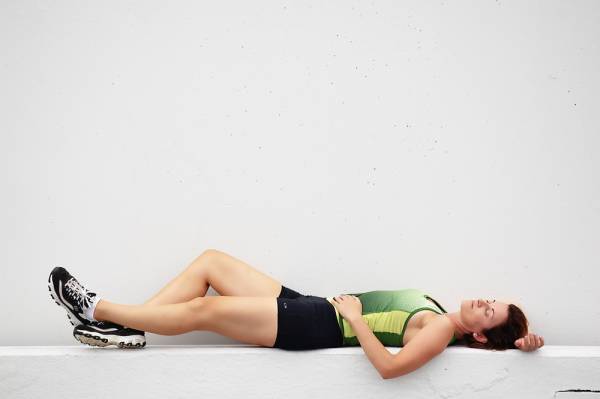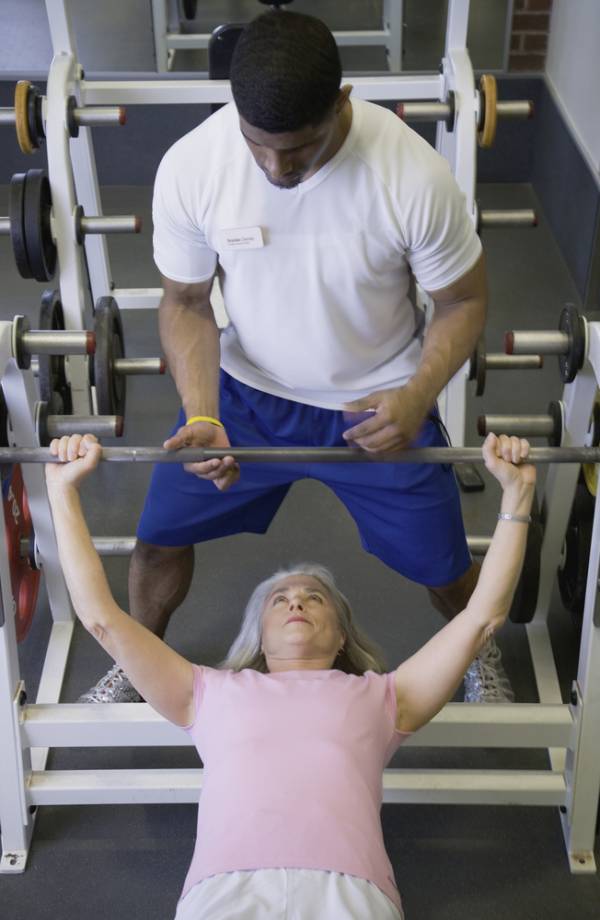The fitness world is an odd place to spend any length of time. Back in the 1990s you were an odd ball if you didn’t want to look like a competitive bodybuilder. These days if you’re not training to be an astronaut-SEAL-MMA fighter you’re not hardcore enough. And what has always been missed is that unless you’re a competitive athlete what really counts is not having diabetes, not being obese, and living the rest of your life healthy and pain free.
I realize this makes me sound soft when it comes to training, but I’m not. We push our clients very hard at Read Performance Training. But we also know when to put it away for the day.
One of my all time training heroes is a man by the name of Charlie Francis. For people who don’t know, Charlie trained the best sprinter the world has ever seen – Ben Johnson. While many will mistakenly point to drugs as the reasons for the success of Charlie’s team, the reality is that he just understood training on a depth that most are just coming to terms with now, more than twenty years later.
I’ve written about the recovery formula before. For training to work and actually cause adaptation we need to ensure adequate recovery takes place. Unfortunately most people add more work into their weeks, hoping to overcome their lack of progress instead of taking a realistic look at what is actually going on. For most people with kids, jobs, and all the other demands and stresses that come from life, it is unrealistic to think you’ll be able to do that many quality sessions per week.
But we need to look within a session, too. Look back at that equation for adaptation/training effect. Effect (or training adaptation in this case) = work x recovery. If your recovery strategy is a constant because you’re already maxed out for quality food, sleep at night, and a nap during the day, then what happens when you over work?
 For starters, what is an over worked situation? The most common is you hitting a new personal record (PR) on an exercise. If you go beyond your limit what you need to do now is go and find a way to enhance your normal recovery mode because what you don’t need is more work – you need more rest.
For starters, what is an over worked situation? The most common is you hitting a new personal record (PR) on an exercise. If you go beyond your limit what you need to do now is go and find a way to enhance your normal recovery mode because what you don’t need is more work – you need more rest.
And this is one of the things that first made me sit up and take notice of Charlie Francis back in the early 90s when I was getting into personal training. When a client hits a new PR I send them home or we stop the session and then devote the rest of the time to enhancing recovery. We do this via foam rolling, stretching, mobility work, and what I would think of as gentle movement to help flush the body.
Here are two scenarios that are both real world examples:
Person A
Person A went into the gym and hit a PR on his very first exercise. Feeling terrific and obviously enthusiastic he went to his next exercise and hit another PR. What a day! Feeling even more pumped up he went to his third exercise and hit another PR. Three in a day. Then, feeling like he could walk through walls he decided to do some box jumps to finish. At this point something went pop in his lower leg and the verdict was a torn Achilles and possible surgery. (I want to point out that this person is not a client).
Person B
Person B came to train on Thursday of this week. We typically start with some deadlifts super-setted with kettlebell swings. Now, I’ll be honest and say this client is my favorite client, as she is my seventy-one year old mother. We only do five things – deadlift, swing, crawl, goblet squat, and push the sled. The first two are together then the last three as a tri-set. My parents tend to travel quite a lot so we usually get interrupted in our training, but the last three months have been very solid and I’ve noticed my mother has been approaching near peak strength after knee surgery late last year. I had planned to do 4-3-2-1 for deadlifts, finishing 5kg below her PR. But she made the last single look so easy I asked if she wanted to try to match her PR for another single. She said yes, she did it, and then instead of going to our tri-set we put the weights away and that was it for the week. (And if you follow Read Performance Training on Facebook you’ll be able to see the video and a bit of her happy dance for equalling her PR with no actual hard training leading up to it.)
 The point is obvious. Both people hit PRs (or matched them). One, just like the gambler, knew when to walk away and one didn’t. One will be good to go on Monday when we train again and one needed about six months of rehab. While I can’t say for certain that my mother may have been injured if we’d kept going, what I do know for certain is that she didn’t need to. How can you ask someone to do more than 100% of what they’re capable? And if you actually hit that rare point where you did 100+% of what you’re capable, then stop. Just stop, stretch it out, and go home. You’re done.
The point is obvious. Both people hit PRs (or matched them). One, just like the gambler, knew when to walk away and one didn’t. One will be good to go on Monday when we train again and one needed about six months of rehab. While I can’t say for certain that my mother may have been injured if we’d kept going, what I do know for certain is that she didn’t need to. How can you ask someone to do more than 100% of what they’re capable? And if you actually hit that rare point where you did 100+% of what you’re capable, then stop. Just stop, stretch it out, and go home. You’re done.
The goal with training isn’t to do the most reps or to spend a certain amount of time in the gym regardless of outcomes. The goal is to improve. If you hit a PR you’ve shown improvement and the work is done. While this takes tremendous discipline if training alone, and some considerable rethinking of your training paradigms, I guarantee that focusing on quality reps and not quantity will have a much bigger long-term payoff for you.
Photos courtesy of Shutterstock.






